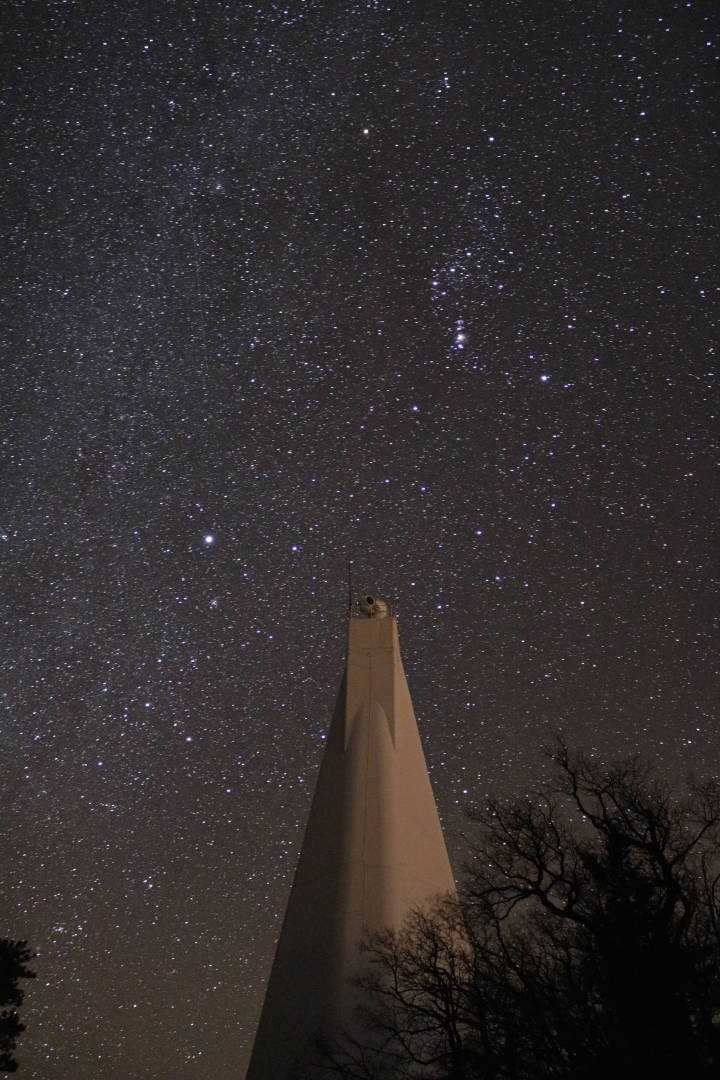A team of scientists managed to draw the first map of atmospheric circulation of the planet Jupiter with the Doppler method.
Jupiter, the largest planet in our solar system, is famous for its brownish-white storm bands and its large red spot. The wind bands race around the planet in an easterly and westerly direction and reach high speeds of up to 500 kilometers per hour. An international team of astronomers, including Patrick Gaulme, astronomer at the Thuringian State Observatory in Tautenburg, has now produced the first map of these winds using the Doppler method.
What wind speeds prevail on Jupiter? Until now, astronomers have used images of the gas planet's cloud structures taken at different time intervals to answer this question. They calculate the wind speeds from the changes in the images. However, this method has its limits. "The clouds change or disappear. This affects the measurements," explains François-Xavier Schmider, Research Director at the Observatoire de la Côte d'Azur (OCA) in France who led the research project.
Another difficulty: The images allow scientists to calculate the speed of the winds in an east-west or west-east direction, but give poor results in a north-south or south-north direction. The reason is, simply put: The bands on Jupiter have different altitudes, and clouds structures are separated from one band to the next. Also, cloud tracking cannot measure the vertical motion in a planet’s atmosphere. Therefore, it is not known, how heat and chemical elements are transported from the inside to the outside of the planet.
Measuring atmospheric circulation with the Doppler method
Instead of relying on cloud images of Jupiter, Schmider's research team uses the Doppler method to observe the atmospheric circulation of the gas planet. The Doppler effect can be used to measure how the frequency of a light or sound wave changes when its source moves relative to the observer. If the source moves towards the observer, the waves arrive at the observer at shorter intervals. If the source moves away, the distances between the waves increase.
Patrick Gaulme, scientist at the Thuringian State Observatory, is part of the international research team that observed the atmospheric circulation on the planet Jupiter using the Doppler method. He describes how the researchers proceeded: "A Doppler imager is mounted on each of three telescopes in Japan, in France and in the USA. Together, these telescopes form the JOVIAL network. The Doppler imager can be used to create an image of the planet together with its Doppler velocity map by tracking the displacement of the spectral lines of sunlight reflected from Jupiter." From the shift of the spectral lines, the speed of the atmospheric motions can be deduced.
After the team had observed for around 80 hours with the instrument at one of the three telescopes, the Dunn Solar Telescope in Sunspot, New Mexico, USA, the researchers were able to create a complete zonal velocity map of the planet Jupiter. This is the first time that such a map is obtained with such a technique for any of the giant planets. “It is stunning. I particularly enjoy seeing the great red spot standing apart. And more generally, watching something that no one has done before. Scientifically speaking, the zonal wind map shows an excellent agreement with results obtained by cloud tracking, which validates the technique, and allows us to move forward”, says Patrick Gaulme.
The team has published the results of its research in the scientific article "Three-dimensional atmospheric dynamics of Jupiter from ground-based Doppler imaging spectroscopy in the visible"in the The Planetary Science Journal. The preprint of the paper is accessible under this link: https://ui.adsabs.harvard.edu/abs/2023arXiv231216888S/abstract
|
A reconstructed image of Jupiter |
A zonal velocity map of Jupiter. The red and blue colors indicate the easterly and westerly winds, respectively. |
Both images were obtained from data recorded with the JOVIAL/JIVE instrument at the Dunn Solar Telescope in Sunspot, New Mexico.

The Dunn Solar Telescope tower at Sunspot, New Mexico, @Patrick Gaulme, for editorial purposes only
The Thuringian State Observatory
The Thuringian State Observatory Tautenburg (TLS) is a research institute funded by the Free State of Thuringia, Germany. It conducts basic research in astrophysics. Researchers at TLS use various telescopes throughout the world for their observations of galaxies, stars, the sun, gamma ray bursts, and extrasolar planets.
The Thuringian State Observatory uses and operates the 2-meter Alfred Jensch Telescope for observations in the optical spectral range and a station of the European Low Frequency Array Radio Telescope (LOFAR). It is also building a solar lab to develop a prototype of an automated telescope for the continuous observation of the sun.
Contact
We are happy to answer your questions:



